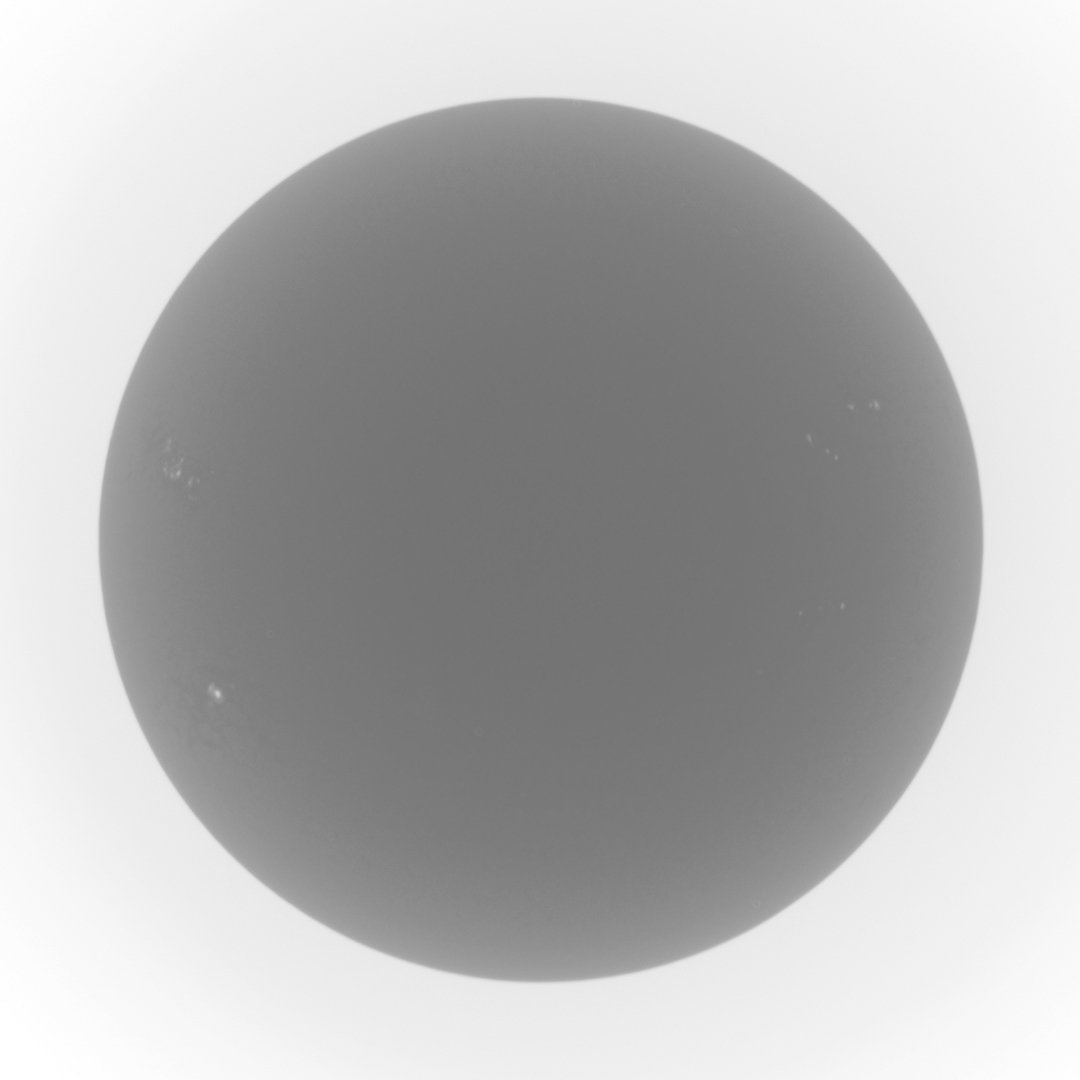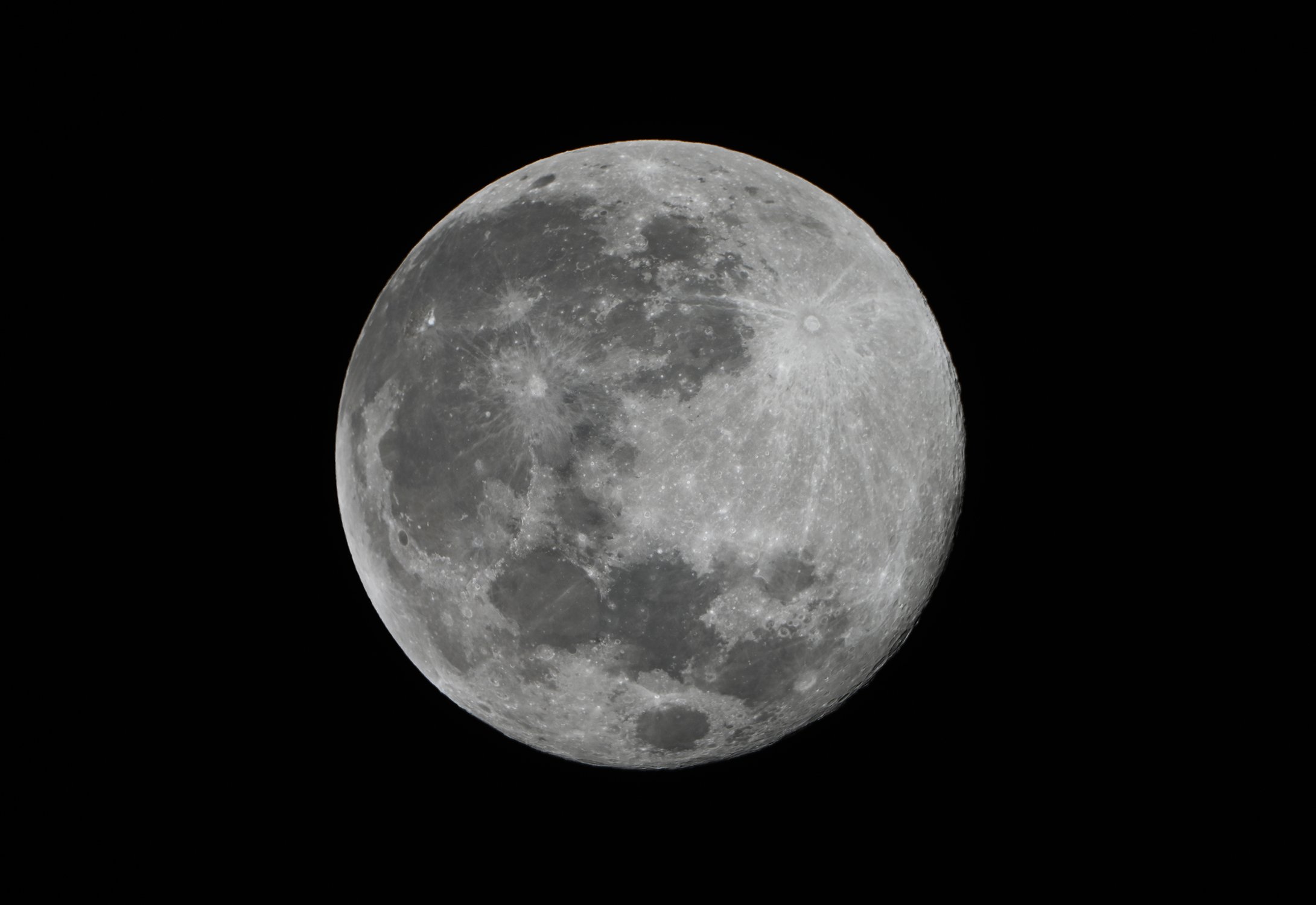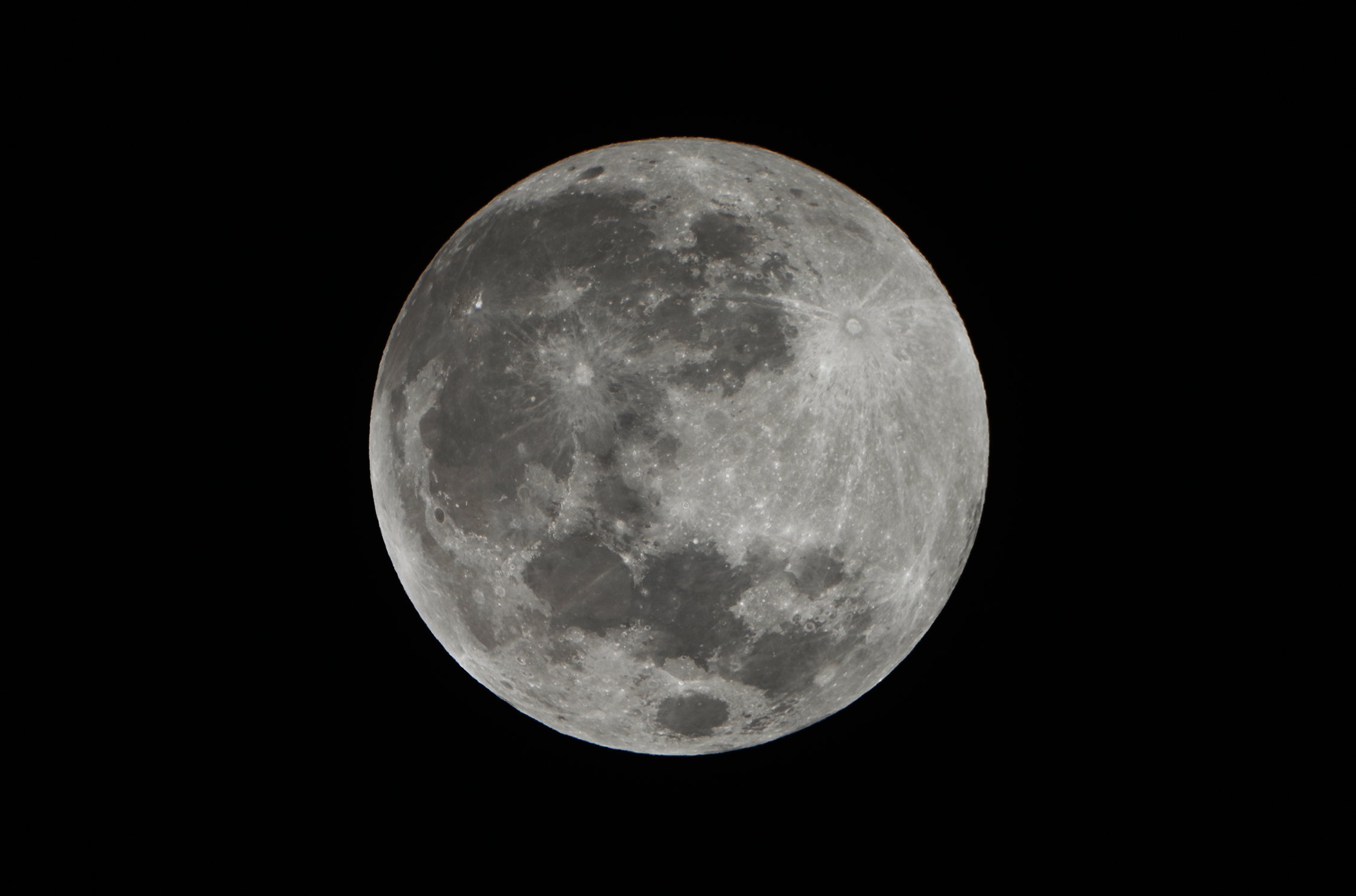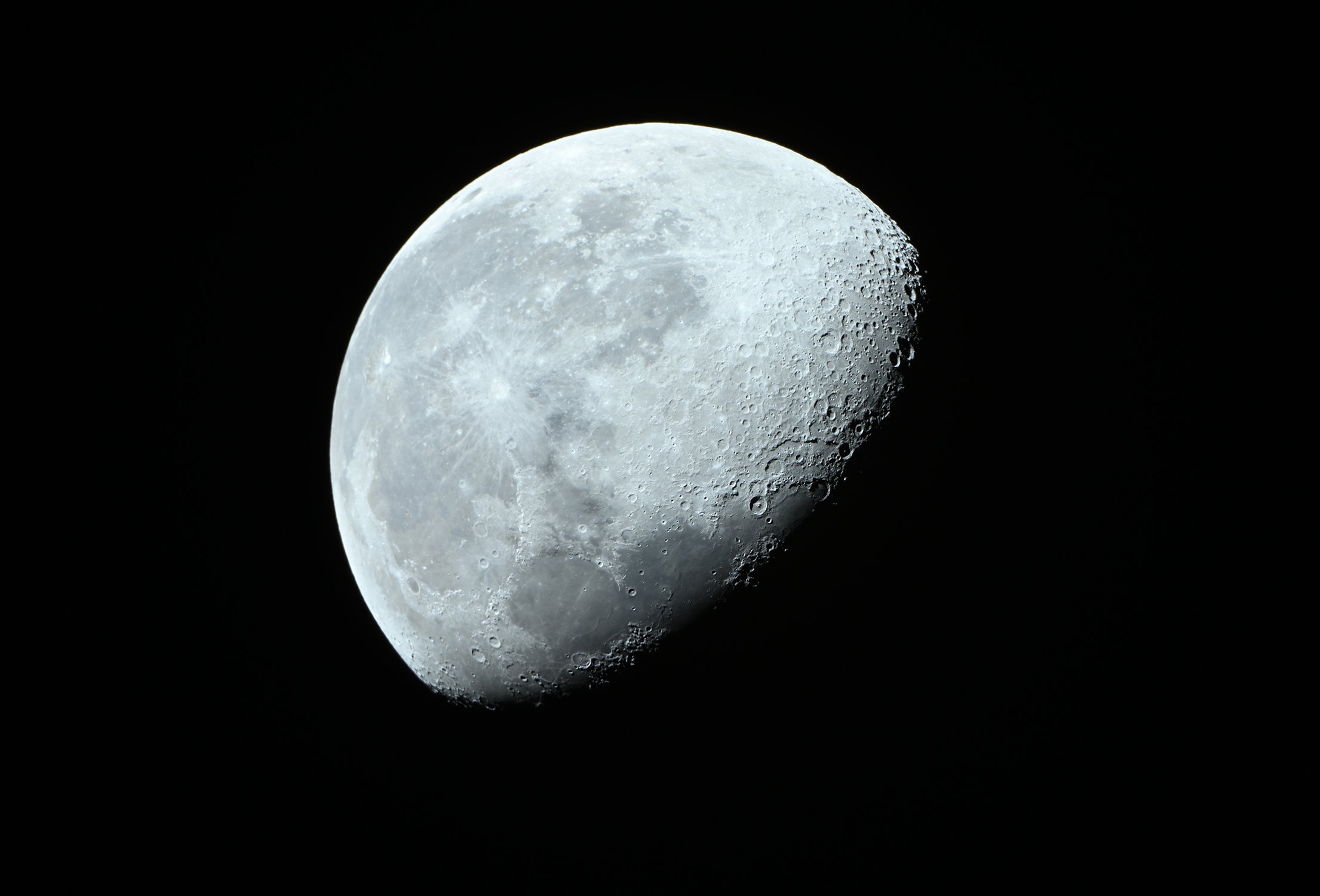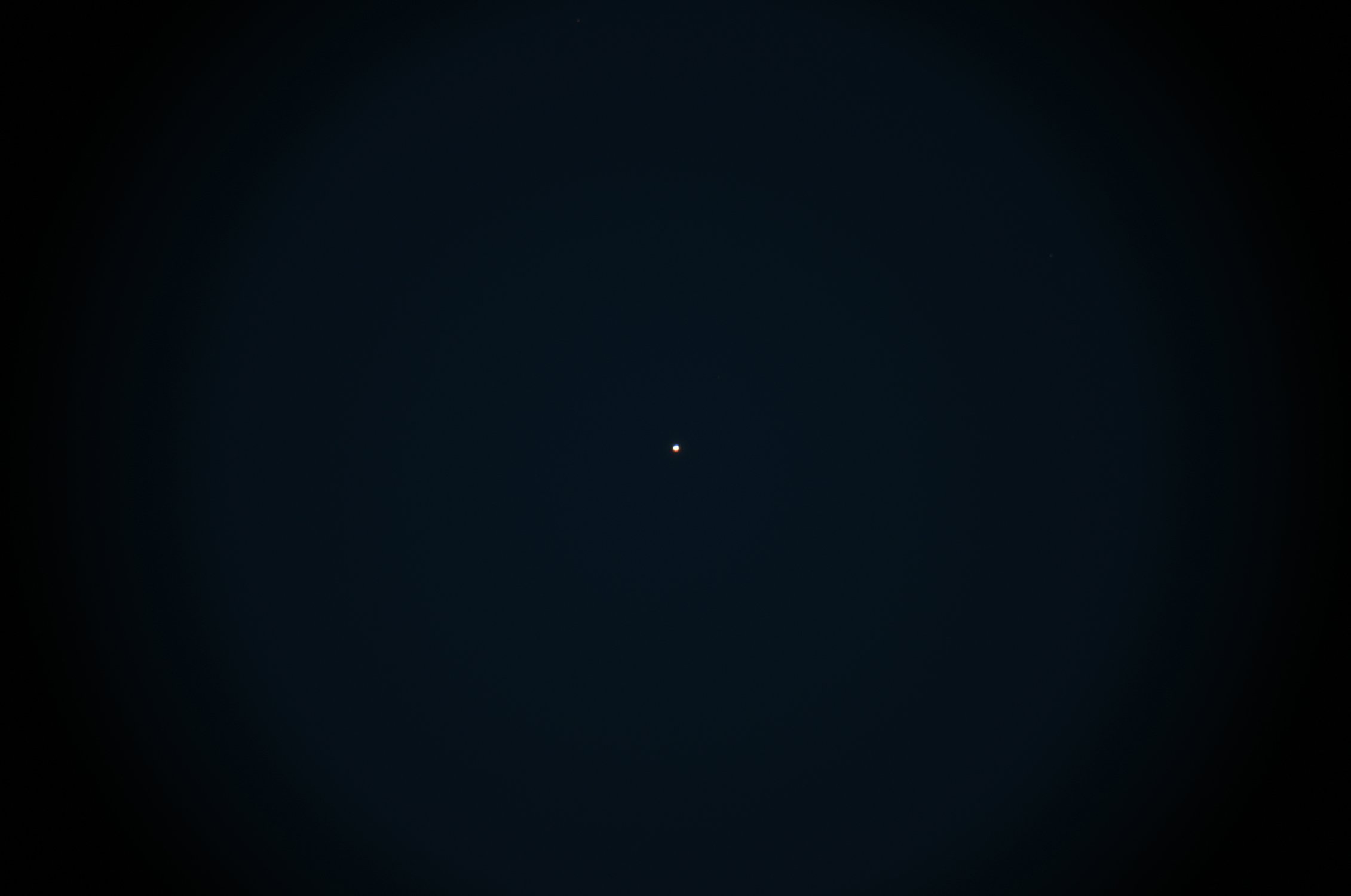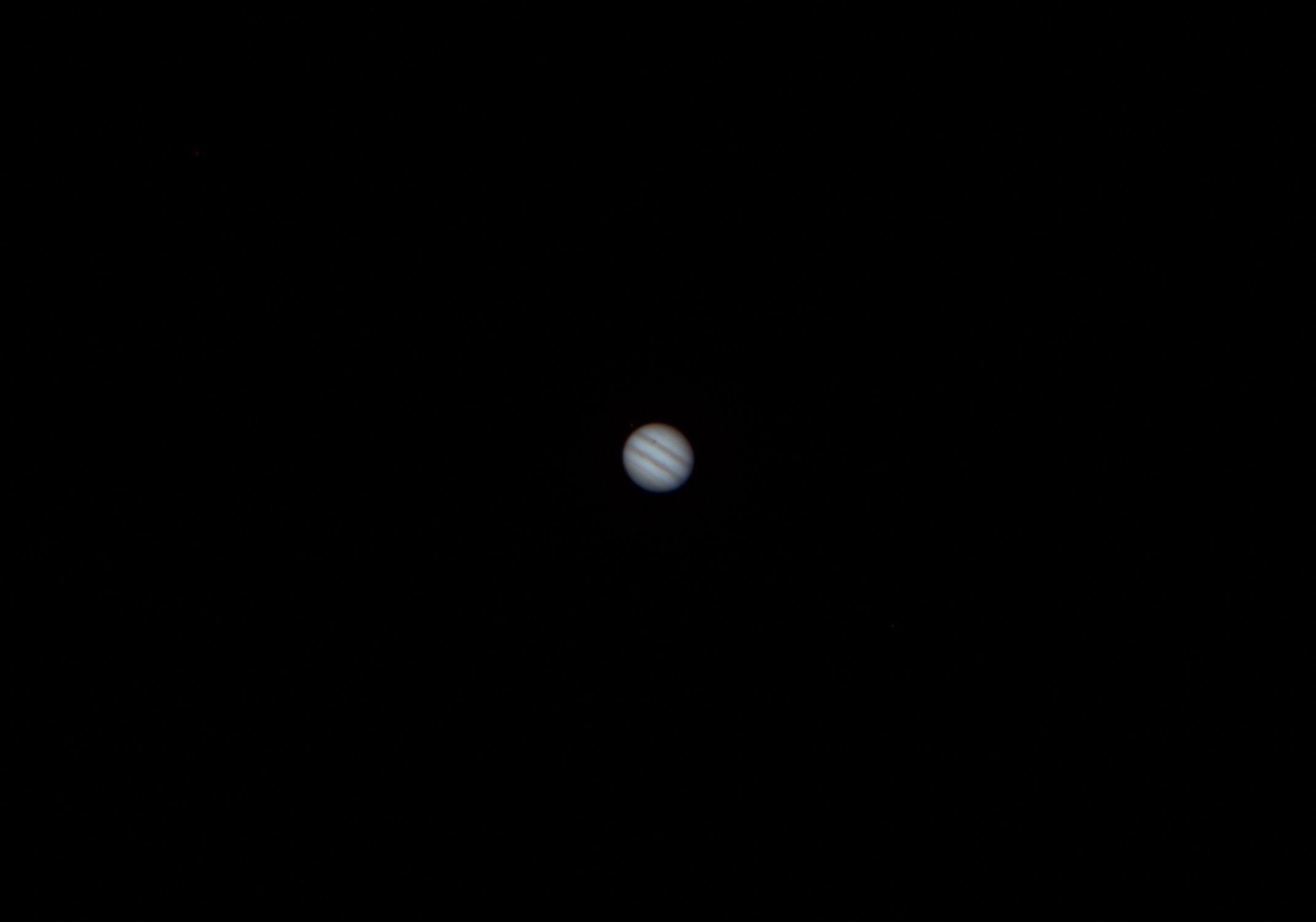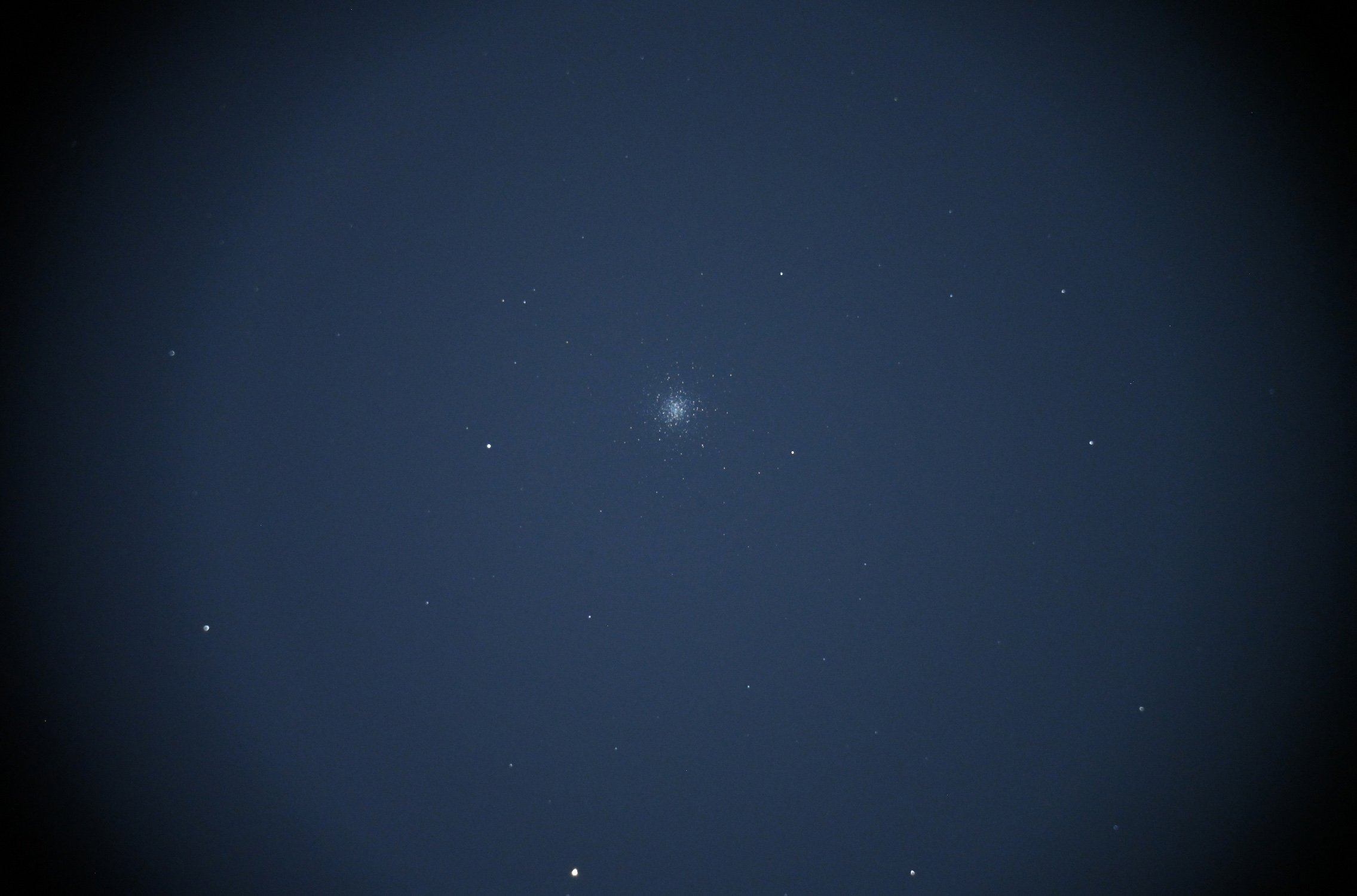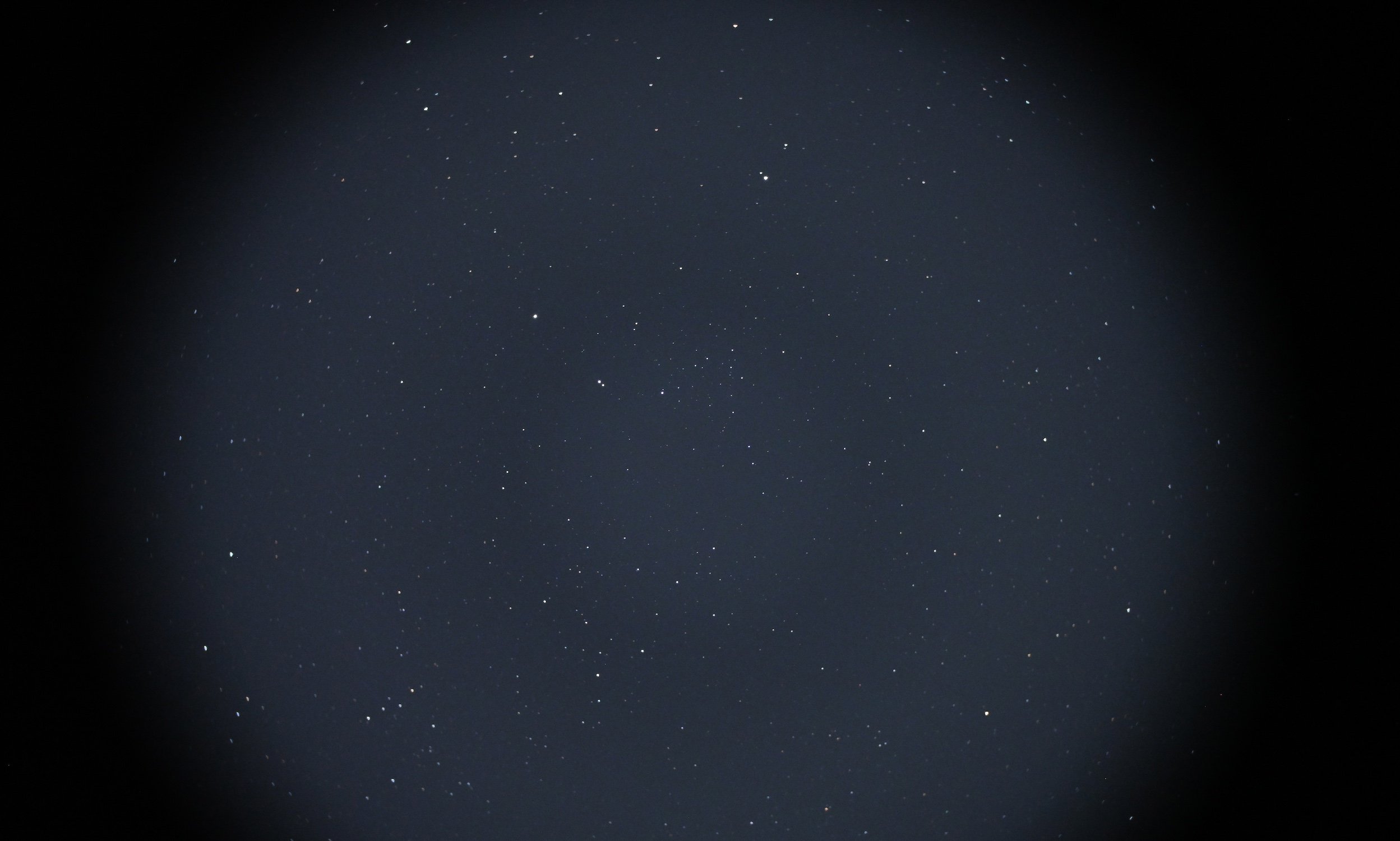Celestial Works (2022 - present)
In 2022, I embarked on an exhaustive, interdisciplinary research project regarding the celestial sphere. Using my garden as a plein air studio, I began working in photography and video for the first time, alongside drawing and works on paper, to document the sublime experiences I was witnessing through the lens of my telescope. Although darker than Brooklyn where I lived for 25 years until 2019, my local skies outside the NYC metropolitan area are Bortle Class 8-9 (light-polluted).
Jupiter & Galilean Moons, 2024
Video (no sound), 3 minutes 37 seconds
The animation presented in this video was created using photographs taken at regular intervals during an extended 7.5 hour period starting on Tuesday, December 12, 2023, 5:30pm, and finishing on Wednesday, December 13, 1:00am.
Astrophotographs
All photographs are single-shot, high-resolution images. No image stacking or heavy post-production processes are involved, al least not for now. Additional objects, as well as higher quality images of current objects, will be posted on an ongoing basis as I get better at this highly-technical process. Smaller, lower resolution images are shared here. Many more photos including time lapses are also available.
The Solar System
Sun, Vernal Equinox, March 19, 2024, 11:16am EST
Sun, Vernal Equinox (Inversion), March 19, 2024, 11:16am EST
Sun, Leap Year Day, February 29, 2024, 8:12am EST
Sun, Winter Solstice, December 21, 2023, 11:55am EST
Total Lunar Eclipse, November 8, 2022, 5:13am EST
Penumbral Lunar Eclipse, March 25, 2024, 3:16am EST
Full Blue Super Moon, August 31, 2023, 10:06pm EST
Full Snow Moon, February 24, 2024, 9:03pm EST
Full Worm Moon, March 24, 2024, 8:32pm EST
Full Snow Moon (Inversion), February 24, 2024, 9:03pm EST
Moon, Waxing at 7% Illumination, March 12, 2024, 6:45pm EST
Moon at 35% Illumination, Cuttyhunk, MA, September 8. 2023, 1:05am EST
Moon at 39% Illumination, May 26, 2023, 9:05pm EST
Moon at 79% Illumination, October 3, 2023, 12:35am EST
Mercury at Greatest Elongation, March 24, 2024, 7:56pm EST
Venus, Gibbous Phase with a Glory, April 25, 2023, 8:49pm EST
Mars, March 15, 2023, 8:26pm EST
Jupiter, with Moon Io in Transit and Its Shadow, September 20, 2023, 12:22am EST
Jupiter and Galilean Moons, Callisto and Io at left, Europa and Ganymede at right, November 11, 2023, 8:55pm EST
Saturn, August 27, 2023, 10:56pm EST
Saturn with Moons, August 31, 2023, 11:35pm EST
Uranus, January 8, 2024, 9:22pm EST
Uranus, September 14, 2023, 11:58pm EST
Asteroid 3 Juno in Opposition, March 3, 2024, 8:30pm EST
Asteroid 23 Thalia in Opposition, March 14, 2024, 12:30am EST
Comet C/2022 E3 (ZTF), Monday, February 6, 2023, 10:53pm EST
The Galactic Anticenter, Auriga Constellation, January 2, 2024, 9:00pm EST
Messier Catalogue
The Messier objects are a set of 110 astronomical objects catalogued by the French astronomer Charles Messier in his Catalogue des Nébuleuses et des Amas d'Étoiles (Catalogue of Nebulae and Star Clusters).
M3, Globular Cluster, Canes Venatici Constellation, July 10, 2023, 12:39am EST
M13 / NGC 6205, Great Globular Cluster, Hercules Constellation, November 1, 2023, 8:08pm EST
M27, Dumbbell Nebula, Vulpecula Constellation - September 19, 2023, 10:19pm EST
M29, Open Cluster, Cygnus Constellation, July 11, 2023, 11:23pm EST
M31, Andromeda Galaxy, Andromeda Constellation, September 19, 2023, 11:33pm EST
M31 and M32, Galaxies, Andromeda Constellation, September 19, 2023, 11:52pm EST
M35 / NGC 2168, Open Cluster, Gemini Constellation, December 8, 2023, 10:29pm EST
M36, Open Cluster, Auriga Constellation, December 8, 2023, 9:41pm EST
M37, Open Cluster, Auriga Constellation, December 8, 2023, 9:48pm EST
M38 / NGC 1912, Starfish Cluster, Open Cluster, Auriga Constellation, December 8, 2023, 9:52pm EST
M39, Open Cluster, Cygnus Constellation, October 3, 2023, 9:41pm EST
M42, Orion Nebula, Orion Constellation, January 8, 2024, 8:22pm EST
M44, Beehive Cluster, Cancer Constellation, January 2, 2024, 9:15pm EST
M45, The Pleiades, Open Cluster, Taurus Constellation, January 8, 2024, 10:21pm EST
M50, Open Cluster, Monoceros Constellation, November 12, 2023, 12:27am EST
M52, Open Cluster, Cassiopeia Constellation, September 14, 2023, 9:54pm EST
M56, Globular Cluster, Lyra Constellation, November 1, 2023, 8:24pm EST
M57, Ring Nebula, Lyra Constellation, October 23, 2023, 10:30pm EST
M67, King Cobra Cluster, Cancer Constellation, February 5, 2024, 9:59pm EST
M71, Globular Cluster, Sagitta Constellation, September 19, 2023, 10:36pm EST
M92, Globular Cluster, Hercules, Constellation, November 1, 2023, 8:16pm EST
New General Catalogue of Nebulae and Clusters of Stars
The Catalogue of Nebulae and Clusters of Stars (CN) is an astronomical catalogue of nebulae first published in 1786 by William Herschel, with the assistance of his sister Caroline Herschel. It was later expanded into the General Catalogue of Nebulae and Clusters of Stars (GC) by his son, John Herschel, in 1864. The CN and GC are the precursors to John Louis Emil Dreyer's New General Catalogue (NGC), compiled in 1888 and used by current astronomers.
NGC 869 & NGC 884, Open Clusters, Perseus Constellation, April 12, 2023, 8:45 pm EST
NGC 1857, Open Cluster, Auriga Constellation, December 8, 2023, 9:56pm EST
NGC 1893, Open Cluster, Auriga Constellation, December 8, 2023, 10:05pm EST
NGC 2169, The 37 Cluster, Orion Constellation, November 11, 2023, 11:54pm EST
NGC 2244, Open Cluster, Gemini Constellation, December 8, 2023, 10:48pm EST
NGC 2281, Open Cluster, Auriga Constellation, December 8, 2023, 10:12pm EST
NGC 2392, Eskimo Nebula, Bipolar Double-Shell Planetary, Gemini Constellation, December 8, 2023, 10:36pm EST
NGC 2420, Open Cluster, Gemini Constellation, December 8, 2023, 10:39pm EST
NGC 6543, Cat's Eye Nebula, Planetary Nebula, Draco Constellation, November 1, 2023, 8:44pm EST
NGC 6703, Elipitical / Spiral Galaxy, Lyra Constellation, November 1, 2023, 8:30pm EST
NGC 6709, Open Cluster, Aquila Constellation, July 12, 2023, 12:28pm EST
NGC 6791, Open Cluster, Lyra Constellation, October 23, 2023, 8:34pm EST
NGC 6871, Open Cluster, Cygnus Constellation, October 3, 2023, 11:03pm EST
NGC 6910, Open Cluster, Cygnus Constellation, October 3, 2023, 10:54pm EST
NGC 7129, Reflection Nebula, Cepheus Constellation, November 1, 2023, 9:17pm EST
NGC 7142, Open Cluster, Cepheus Constellation, November 1, 2023, 9:28pm EST
NGC 7380, Wizard Nebula, Open Star Cluster, Cepheus Constellation, November 1, 2023, 9:34pm EST
Star Portraits
This ongoing project is dedicated to John Adams Whipple and William Bond, who together took the first photograph of a star — Vega in the constellation Lyra — on July 17, 1850. Using the 15-inch Great Refractor telescope at Harvard University, Cambridge, MA, they created a daguerreotype with an exceedinly-long exposure time of 20 minutes.
Acubens / Alpha Cancri, Cancer Constellation, February 5, 2024, 9:04pm EST
Albireo / Beta Cygni, Cygnus Constellation, October 23, 2023, 10:38pm EST
Aldebaran / Alpha Tauri, Taurus Constellation, December 8, 2023, 7:05pm EST
Alfirk / Beta Cephei, Cepheus Constellation, November 1, 2023, 8:53pm EST
Alhena / Gamma Geminorum, Gemini Constellation, February 5, 2024, 8:26pm EST
Almaaz / Epsilon Aurigae, Auriga Constellation, January 2, 2024, 8:33pm EST
Alnilam / Epsilon Orionis, Orion Constellation, November 11, 2023, 10:56pm EST
Alnitak / Zeta Orionis, Orion Constellation, November 11, 2023, 11:06pm EST
Alrescha / Alpha Piscium, Pisces Constellation, January 8, 2024, 9:06pm EST
Altair / Alpha Aquilae, Aquila Constellation, October 3, 2023, 11:21pm EST
Alterf / Lambda Leonis, Cancer Constellation, February 5, 2024, 9:08pm EST
Arcturus / Alpha Boötis, Boötes Constellation, July 30, 2023, 11:37pm EST
Asellus Australis / Delta Cancri, Cancer Constellation, February 5, 2024, 9:10pm EST
Asellus Borealis / Gamma Cancri, Cancer Constellation , February 5, 2024, 9:14pm EST
Bellatrix / Gamma Orionis, Orion Constellation, November 11, 2023, 10:36pm EST
Capella / Alpha Aurigae, Auriga Constellation, January 2, 2024, 8:06pm EST
Castor / Alpha Geminorum, Gemini Constellation, February 5, 2024, 8:09pm EST
Deneb / Alpha Cygni, Cygnus Constellation, September 8, 2023pm EST
Double Double / Epsilon Lyrae, Lyra Constellation, October 3, 2023, 9:27pm EST
Elnath / Beta Tauri, Auriga & Taurus Constellations, January 2, 2024, 8:16pm EST
Gomeisa / Beta Canis Minoris, Canis Minor Constellations, December 8, 2023, 10:54pm EST
Haedus / Eta Aurigae, Auriga Constellation, January 2, 2024, 8:38pm EST
Hamal / Alpha Arietis, Aries Constellation, January 2, 2024, 9:58pm EST
Hassaleh / Iota Aurigae, Auriga Constellation, January 2, 2024, 8:28pm EST
Iota Cancri, Cancer Constellation, February 5, 2024, 9:25pm EST
Mahasim / Theta Aurigae, Auriga Constellation, January 2, 2024, 8:22pm EST
Mebsuta / Epsilon Geminorum, Gemini Constellation, February 5, 2024, 8:37 pm EST
Mekbuda / Zeta Geminorum, Gemini Constellation, February 5, 2024, 8:45pm EST
Menkalinan / Beta Aurigae, Auriga Constellation, January 2, 2024, 8:11pm EST
Menkar / Alpha Ceti, Cetus Constellation, January 8, 2024, 10:13pm EST
Mesarthim / Gamma Arietis, Aries Constellation, January 2, 2024, 10:10pm EST
Mintaka / Delta Orionis, Orion Constellation, November 11, 2023, 10:45pm EST
Mothallah / Alpha Trianguli, Triangulum Constellation, January 8, 2024, 9:16pm EST
Pollux / Beta Geminorum, Gemini Constellation, February 5, 2024, 8:13pm EST
Prijipati / Delta Aurigae, Auriga Constellation, January 2, 2024, 8:50pm EST
Procyon / Alpha Canis Minoris, Canis Minor Constellation, December 8, 2023, 10:51pm EST
Regulus / Alpha Leonis, Leo Constellation, March 3, 2024, 9:18pm EST
Rho Cancri, Cancer Constellation, February 5, 2024, 9:32pm EST
Rigel / Beta Orionis, Orion Constellation, November 11, 2023, 11:33pm EST
Saclateni / Zeta Aurigae, Auriga Constellation, January 2, 2024, 8:43 pm EST
Sadr / Gamma Cygni, Cygnus Constellation, October 23, 2023, 10:57pm EST
Saiph / Kappa Orionis, Orion Constellation, November 12, 2023, 12:14pm EST
Shelyak / Beta Lyrae, Lyra Constellation, October 3, 2023, 9:01pm EST
Sheratan / Beta Arietis, Aries Constellation, January 2, 2024, 10:18pm EST
Sulafat / Gamma Lyrae, Lyra Constellation, October 23, 2023, 10:13pm EST
Tegmine / Zeta Cancri, Cancer Constellation, February 5, 2024, 9:19pm EST
Vega / Alpha Lyrae, Lyra Constellation, November 1, 2023, 8:03pm EST
Wasat / Delta Geminorum, Gemini Constellation, February 5, 2024, 8:30pm EST
X Cancri, Cancer Constellation, February 5, 2024, 9:42pm EST

